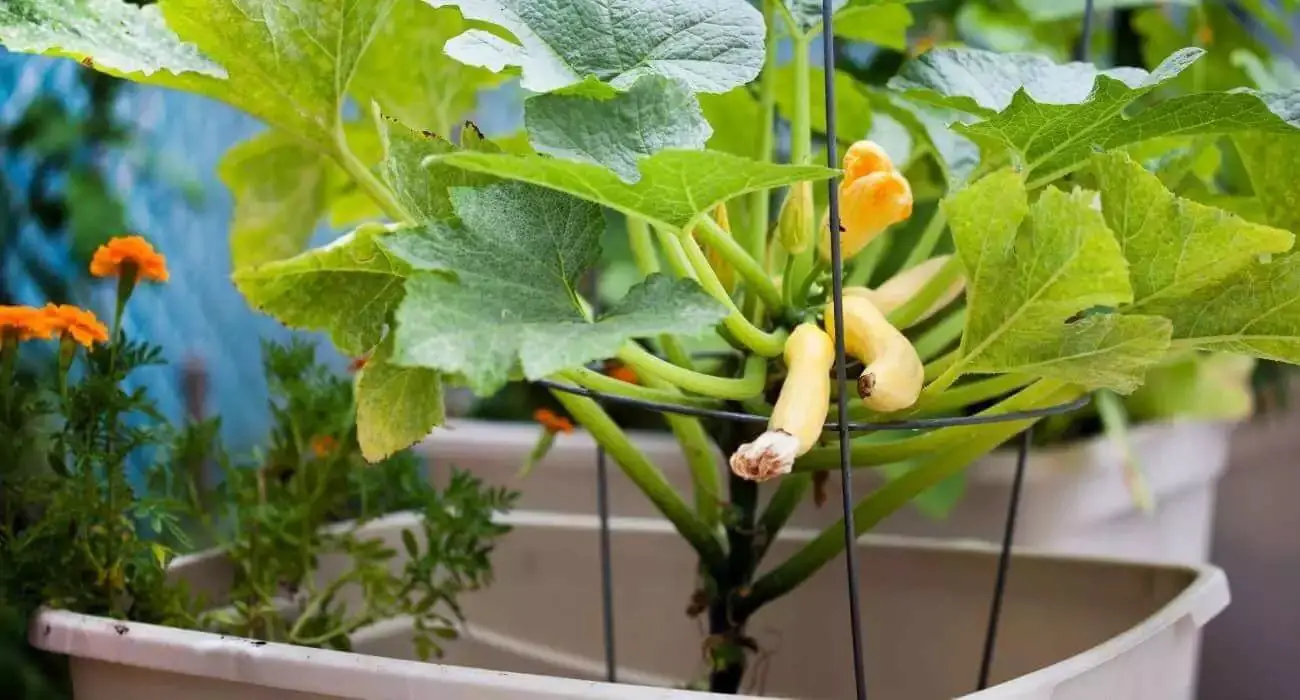Are you interested in growing butternut squash but don’t have a large garden? Look no further! In this article, we will explore some helpful tips for successfully growing butternut squash in containers. Whether you have limited space or simply prefer the convenience of container gardening, we’ve got you covered. Discover the secrets to cultivating delicious, homegrown butternut squash right on your patio or balcony. Get ready to enjoy a bountiful harvest of this tasty and versatile vegetable!
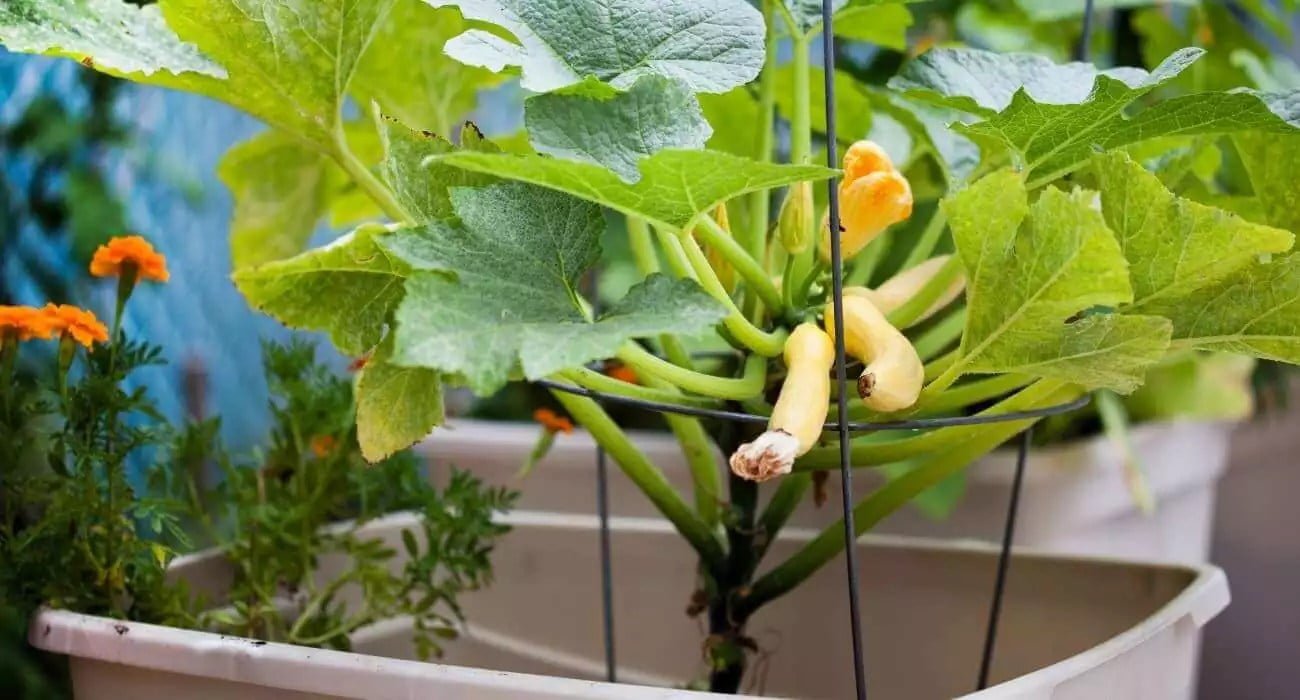
Choosing the Right Container
Selecting the Appropriate Size
When it comes to growing butternut squash in containers, choosing the right size container is of utmost importance. Butternut squash plants have extensive root systems, so it is essential to provide them with enough space to grow and spread out. A container that is at least 18 inches in diameter and at least 24 inches deep is recommended to accommodate the root system and allow for proper growth.
Checking for Drainage Holes
Proper drainage is vital for the successful growth of butternut squash in containers. Before selecting a container, always check if it has sufficient drainage holes. These holes allow excess water to escape and prevent the roots from becoming waterlogged, which can lead to root rot. If the chosen container does not have enough drainage holes, it is important to drill some additional holes to ensure proper drainage.
Considering Material Options
Choosing the right material for your container is essential for the wellbeing of your butternut squash plants. The two most commonly used container materials are plastic and clay. Plastic containers are lightweight, durable, and retain moisture well. On the other hand, clay pots are known for their aesthetic appeal and natural ability to wick away excess moisture. Whichever material you choose, make sure it is suitable for your growing conditions and meets the requirements of your butternut squash plants.
Preparing the Container
Cleaning and Sanitizing
Before planting your butternut squash seeds, it is crucial to clean and sanitize the container you will be using. This helps eliminate any potential disease-causing bacteria or pathogens present in the container. Start by thoroughly cleaning the container with soap and water. Then, disinfect it by using a 10% bleach solution or a commercial garden disinfectant. Rinse the container well after sanitizing to remove any residual disinfectant.
Adding Drainage Materials
To improve drainage in your container, you can add drainage materials at the bottom before adding the growing medium. This can be done by placing a layer of small rocks, broken pottery, or even pieces of foam at the bottom of the container. These materials help create space between the growing medium and the excess water, preventing the roots from drowning. Be sure to add enough drainage materials to cover the bottom of the container.
Filling with Suitable Growing Medium
Choosing the right growing medium is crucial for the healthy growth of butternut squash plants. A well-draining but nutrient-rich soil mix is ideal for container-grown butternut squash. You can create a suitable growing medium by combining equal parts of high-quality potting soil, compost, and perlite or vermiculite. This mixture provides good aeration, drainage, and essential nutrients for the plants. Fill the container with the growing medium, leaving a few inches of space at the top for watering and mulching later on.
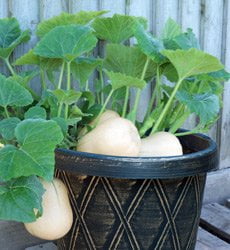
Optimal Growing Conditions
Sunlight Requirements
Butternut squash plants thrive in full sunlight. They require a minimum of six to eight hours of direct sunlight each day to produce healthy fruits. When selecting the location for your container, ensure that it receives ample sunlight throughout the day. If your available space does not receive adequate sunlight, consider using additional artificial lighting or moving the container to a sunnier spot.
Temperature Range
Butternut squash is a warm-season crop, and it requires specific temperature ranges to grow successfully. The optimal temperature range for butternut squash plants is between 70°F and 85°F (21°C and 29°C) during the day and between 50°F and 65°F (10°C and 18°C) at night. Extreme heat or cold can negatively impact plant growth and fruit production. If your area experiences temperature extremes, consider using protective covers or adjusting the location of your container to maintain optimal temperatures.
Humidity Needs
While butternut squash plants can tolerate a range of humidity levels, they generally prefer moderate humidity. Aim for a humidity level between 50% and 70% to provide optimum growing conditions for your plants. If you live in a dry climate, you can increase humidity around the plants by misting them regularly or using a humidifier. In humid regions, ensure proper air circulation around the container to prevent excessive moisture buildup and the development of fungal diseases.
Choosing the Right Butternut Squash Variety
Compact Varieties
When growing butternut squash in containers, it is best to choose compact varieties that are better suited for confined growing spaces. Compact varieties typically have a more compact vine growth habit and produce smaller fruits, making them ideal for container gardening. Look for varieties specifically labeled as “compact” or “bush” to ensure you have the best chance of success with growing butternut squash in containers.
Disease-Resistant Varieties
Growing disease-resistant varieties of butternut squash is a wise choice to minimize the risk of diseases and ensure a successful harvest. When choosing a variety, look for those that are resistant to common diseases such as powdery mildew, downy mildew, and vine borers. Disease-resistant varieties are specifically bred to withstand these common issues and can greatly reduce the chances of your plants succumbing to diseases.
Determinate vs. Indeterminate
Understanding the growth habit of butternut squash varieties is crucial when growing them in containers. Determinate varieties have a more compact growth habit and tend to produce fruit over a shorter period. Indeterminate varieties, on the other hand, have a vining growth habit and can continue to produce fruit throughout the growing season. Determinate varieties are generally more suitable for container gardening, as their more compact growth does not overwhelm the limited space available in containers.
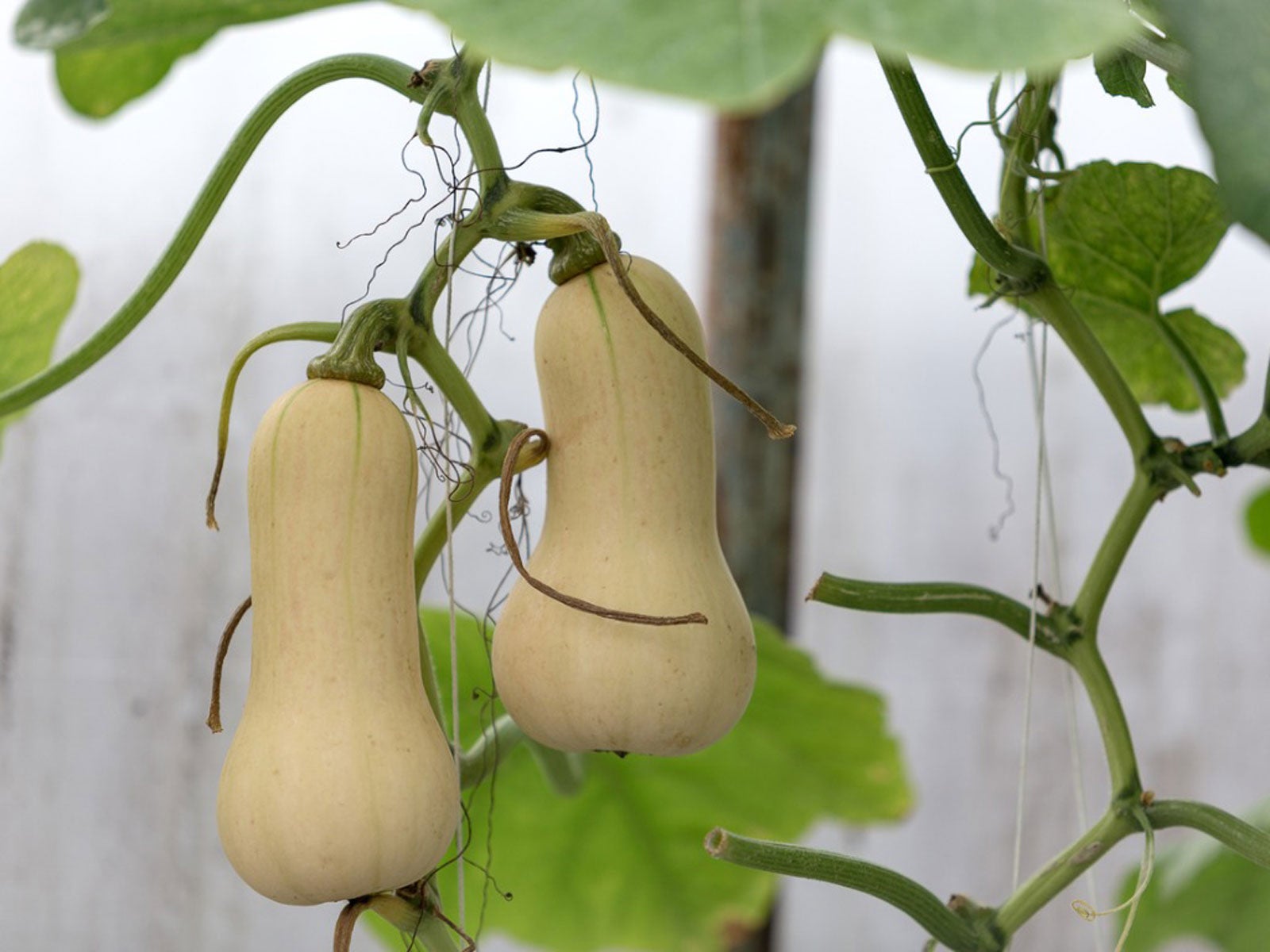
Planting Butternut Squash Seeds
Optimal Time for Planting
Choosing the right time to plant your butternut squash seeds is essential for a successful harvest. Butternut squash is a warm-season crop, and the seeds should be planted when the soil temperature has warmed up to at least 60°F (15°C). In most regions, this corresponds to planting in late spring or early summer. Be mindful of your specific climate and local frost dates to determine the appropriate time for planting.
Seed Preparation
Before sowing the butternut squash seeds, it is beneficial to prepare them for optimal germination. One method of seed preparation is to soak the seeds in warm water for 24 hours prior to planting. This helps soften the seed coat and encourages quicker germination. Alternatively, you can also lightly file the seed coat or nick it with a sharp knife to enhance water absorption and improve germination rates.
Sowing the Seeds
When sowing your butternut squash seeds, ensure that the container has been filled with the prepared growing medium. Create small planting holes about 1 inch deep and space them approximately 2 to 3 feet apart, depending on the recommended spacing for the variety you have chosen. Place one or two seeds in each hole and cover them lightly with soil. Water gently to settle the soil and ensure proper hydration of the seeds. Keep the container in a warm location and maintain consistent moisture until the seeds germinate.
Caring for Butternut Squash Plants
Watering Guidelines
Proper watering is crucial for the healthy growth of butternut squash plants. The goal is to provide consistent moisture without overwatering or allowing the soil to become waterlogged. As a general guideline, water the plants deeply once or twice a week, ensuring that the water reaches the root zone. To avoid water stress, monitor the moisture level by sticking your finger about an inch into the soil. If it feels dry, it’s time to water.
Fertilizing Schedule
To ensure optimal growth and fruit production, regular fertilization is necessary for container-grown butternut squash. Start by incorporating a slow-release granular fertilizer into the growing medium during planting. After that, feed the plants with a balanced liquid fertilizer every two to three weeks throughout the growing season. This provides the necessary nutrients for healthy plant growth and maintains vigorous fruiting.
Training and Support
As butternut squash plants grow, they can become unruly and sprawling, especially in containers. To maximize space and prevent the plants from taking over the container, it is essential to provide some form of support or training. This can be done by installing trellises, cages, or stakes that the plants can grow along. Training the vines vertically not only saves space but also improves air circulation, reduces the risk of diseases, and makes harvesting easier.
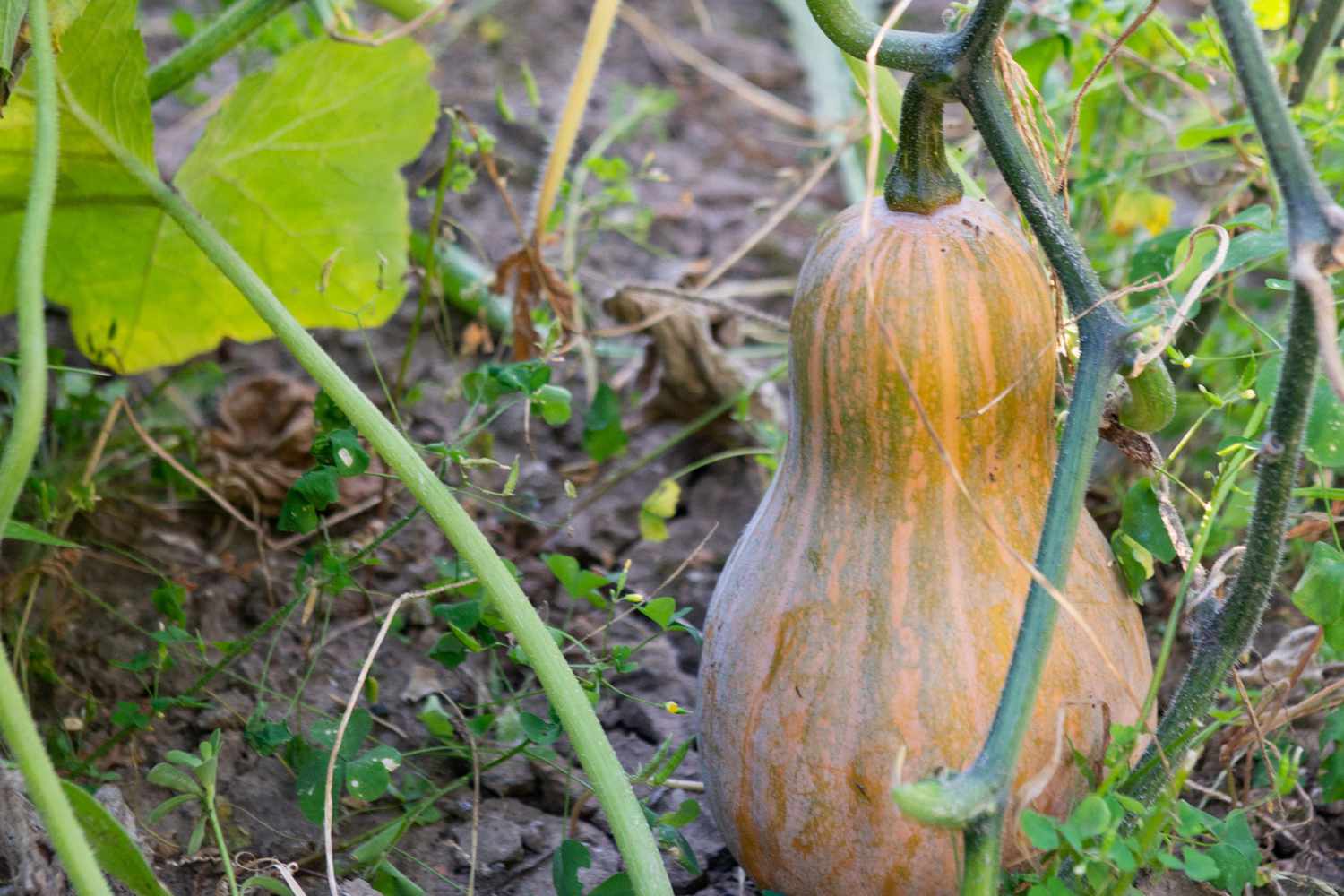
Managing Pests and Diseases
Common Pests
Despite the best efforts in container gardening, pests can still pose a threat to your butternut squash plants. Some common pests that may attack butternut squash include squash bugs, cucumber beetles, and vine borers. It is important to monitor your plants regularly and take action as soon as you notice any pests. Early detection and intervention help prevent the pests from causing significant damage to your plants.
Natural Pest Control Methods
When it comes to pest control, it is always best to start with organic and natural methods. Introducing beneficial insects such as ladybugs, lacewings, or praying mantises into your garden can help control pest populations. You can also make homemade insecticidal sprays using ingredients like neem oil, garlic, or soap to repel or deter pests. Regularly inspecting your plants and manually removing any pests you find can also be effective in managing pest populations.
Identifying and Treating Diseases
Diseases can affect butternut squash plants, causing foliage damage, reduced fruit production, or even plant death. Common diseases that affect butternut squash include powdery mildew, downy mildew, and various fungal infections. Regularly inspect your plants for any signs of disease, such as discolored foliage, powdery patches, or wilting. If a disease is detected, prompt action is essential. Treat the plants with appropriate organic fungicides or contact your local extension office for guidance on disease management.
Harvesting and Storage
Determining Harvest Time
Knowing when to harvest your butternut squash is crucial to ensure maximum flavor and quality. The exact time to harvest may vary depending on the variety, but generally, butternut squash is ready for harvest when the skin has hardened and turned a deep tan or beige color. The stem attached to the fruit should also be dry and corky. In addition, the vines and leaves may start to wither. If uncertain, you can perform the thumbnail test by gently pressing your thumbnail into the skin. If it doesn’t puncture the skin, the squash is ready for harvest.
Proper Harvesting Techniques
To harvest your butternut squash, use a sharp knife or pruning shears to cut the fruit from the vine, leaving a small stem intact. Avoid pulling the squash from the vine, as it may damage the plant or cause the fruit to spoil prematurely. Handle the harvested squash carefully to prevent bruising or any other damage. It is advisable to wear gloves during harvest as the skins of some varieties can be rough and cause irritation.
Storage Recommendations
Proper storage is crucial to extend the shelf life of your harvested butternut squash. Start by cleaning any dirt or debris from the surface of the squash using a soft brush or cloth. Allow the squash to cure in a well-ventilated area at a temperature of around 70°F (21°C) for approximately two weeks. Once cured, store the squash in a cool, dry location with a temperature range of 50°F to 55°F (10°C to 13°C). Properly stored butternut squash can last for several months, providing you with delicious and nutritious produce throughout the winter.

Troubleshooting Common Issues
Yellowing Leaves
If you notice yellowing leaves on your butternut squash plants, it is usually an indication of a nutrient deficiency or improper watering. Check the soil moisture level and adjust your watering routine accordingly. Additionally, yellowing leaves can be a sign of nitrogen deficiency. In such cases, consider applying a balanced liquid fertilizer to provide the necessary nutrients and help green up the leaves. If the problem persists, consult a local gardening expert for further guidance.
Powdery Mildew
Powdery mildew is a common fungal disease that affects many plants, including butternut squash. It appears as a powdery white or gray coating on the leaves, stems, and sometimes fruits of the plant. To manage powdery mildew, maintain proper air circulation around the plants by avoiding overcrowding and providing adequate spacing. Regularly monitor your plants for symptoms and promptly treat with organic fungicides or natural remedies such as neem oil or a baking soda solution.
Blossom End Rot
Blossom end rot is a physiological disorder that affects the developing fruits of butternut squash. It appears as a dark, sunken, or water-soaked area at the blossom end of the fruit. This condition is caused by calcium deficiency or irregular watering practices. To prevent blossom end rot, ensure consistent and adequate moisture levels in the soil. Mulching around the plants can help regulate soil moisture. Additionally, maintaining proper calcium levels by applying a calcium-rich fertilizer can help prevent this issue.
Successful Container Gardening Tips
Proper Watering Techniques
Consistent and adequate watering is crucial for successful container gardening, especially when growing butternut squash. It is important to water deeply and allow excess water to drain out of the container. Instead of frequent shallow watering, aim for thorough watering sessions to encourage deeper root growth. However, be mindful not to overwater, as this can lead to root rot and other moisture-related issues. Regularly monitor soil moisture levels and adjust your watering routine accordingly.
Regular Monitoring and Maintenance
Regular monitoring and maintenance play a significant role in the success of container gardening. As container-grown plants have limited resources, it is important to regularly check for signs of pests, diseases, and nutrient deficiencies. Proper monitoring allows you to address any issues promptly and take preventive measures to ensure the health and vitality of your butternut squash plants. Regularly inspect your plants and make adjustments to watering, fertilizing, or training as needed.
Choosing the Right Companion Plants
Companion planting is an excellent way to maximize the productivity and health of your butternut squash plants. When choosing companion plants, consider those that have similar sun, soil, and water requirements. Planting herbs like basil, oregano, or marigolds alongside your butternut squash can help repel pests and attract beneficial insects. Avoid planting other vine crops nearby, as they may compete for resources and growing space.
By following these tips and guidelines, you can successfully grow bountiful butternut squash in containers. With proper care, attention, and a little patience, you’ll be rewarded with delicious homegrown butternut squash that will enhance your culinary creations and bring joy to your gardening adventures. Happy container gardening!
